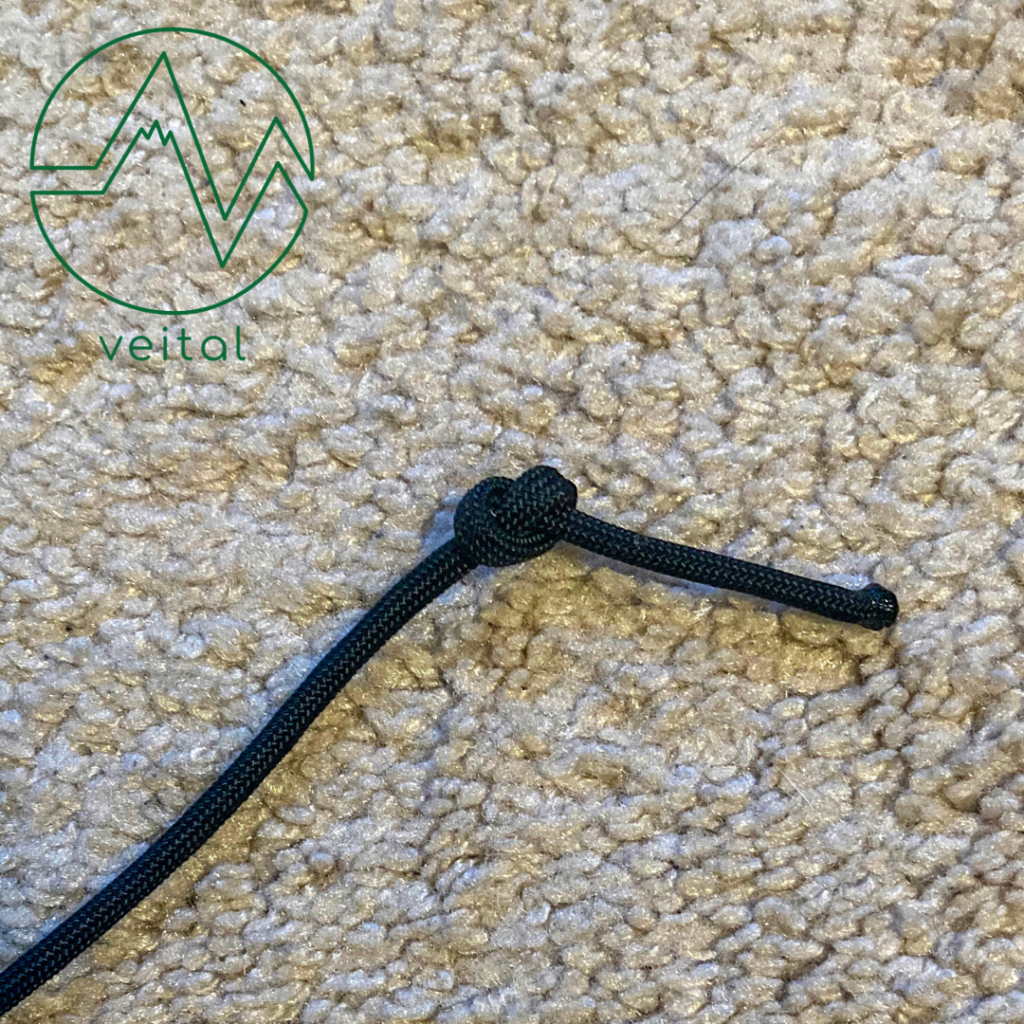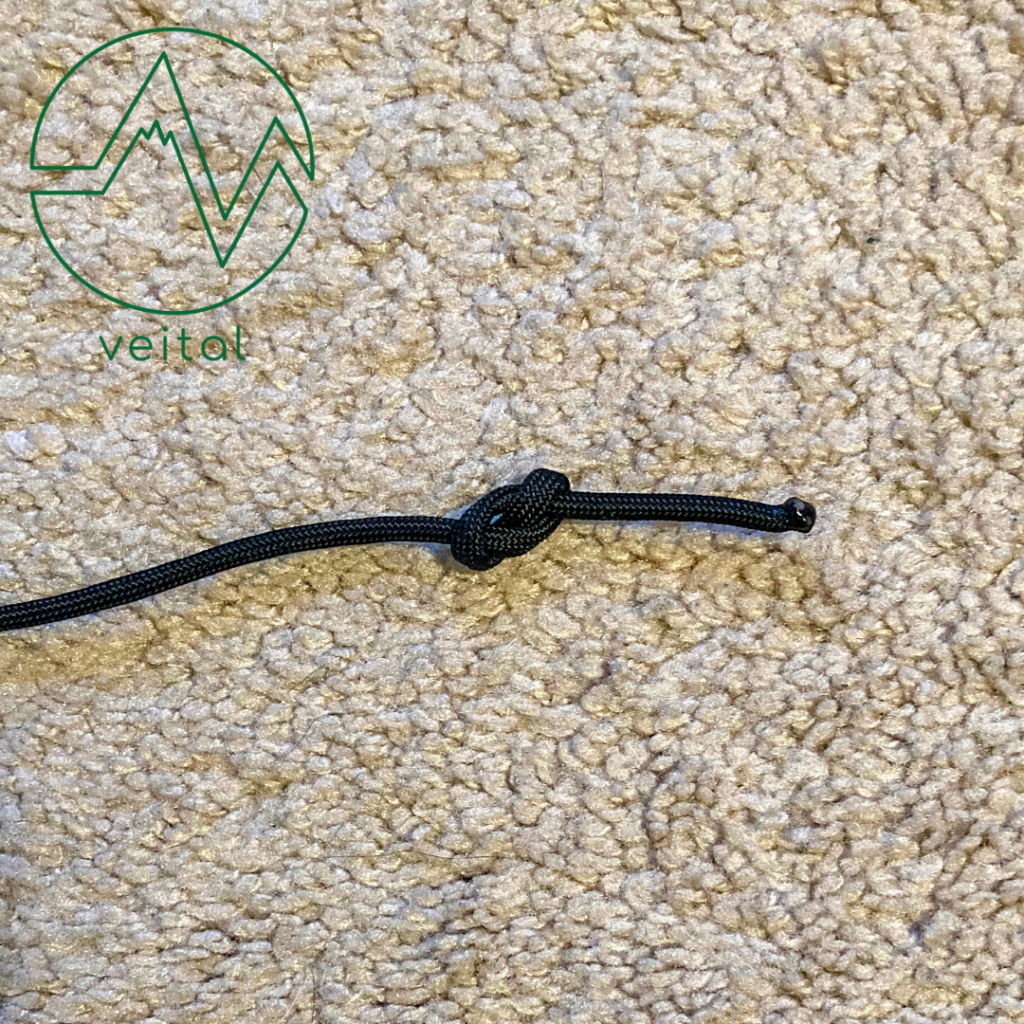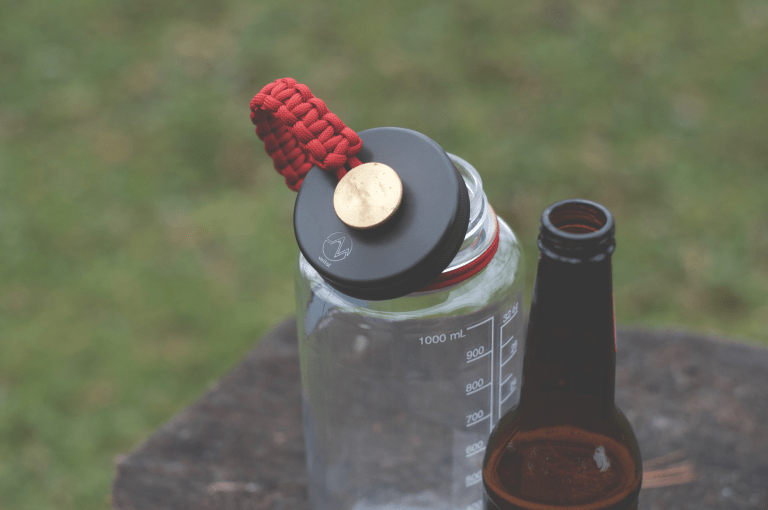All of us outdoor lovers have been there. We need to pitch a tent or put an overhead line to keep camp dry, and then the puzzled faces come up. On this guide, we’ll explore 7 of the best knots for camping using paracord. Why paracord, you may ask? Well, of course, one of the features that make the Nighthawk lid stand out and an excellent multitool is the 7 feet of uninterrupted 550 paracord that complete the package.
Whether you find yourself short of materials to build your perfectly idyllic weekend campsite, or you’re in a stressful outdoor situation where you need to make do with what you have, this guide teaches you 7 of the best knots for camping using 7ft of uninterrupted paracord. Let’s start with the basics.
Types of knots:
Although we call most rope ties a knot, they differ slightly in name based on nature. The names of rope ties will give you an idea of the type of uses you can implement them on. Here are the different types:
Knot
We use a knot to tie a rope to itself. If we’re getting technical, a knot used to describe a stopper mechanism on a line to prevent it from slipping through. However, nowadays, most knots, hitches, or bends are called knots.
Hitch
We use a hitch to tie a rope to another object. A good example is anchoring your dog’s leash to a tree for hassle-free camp lounging.
Bend
We use a bend to tie two ropes together. Typically used to mate two ropes of different sizes, it can be useful in many situations.
7 Knots for Camping
Overhand Knot
Possibly the most basic knot out there. This one can be an excellent finisher to other knots or be used to stop a rope from slipping through its intended placement.
How to knot:
Make a loop on your rope and run one end through the loop and tighten to bring together.

Figure 8 Knot
Like the overhand knot, this is a great knot to use as a stopper or finishing knot, with the added benefit of being easier to untie after being under load.
How to knot:
Make a loop and run the working end of the rope underneath the standing end. Pass the working end through the loop to create a Figure 8.

Figure 8 on a Bite Knot
This one is another version of the tried and true figure 8 knot. This knot is an elegant solution to tie carabiners to the loop and run them however you need.
How to knot:
On the working end of the rope, make a bight by bringing the end parallel to the line. Grab the bight and bring it towards the line, making one and a half turns around the double line. Close the knot by taking the bight and passing through the loop.

Bowline Knot
This knot is essential for the outdoor explorer like the Veital connoisseur. We use it to secure loads, and it can be implemented in a myriad of situations.
How to knot:
Lay the rope across your left hand with the free end hanging down. Create a bight and bring the open end up to pass through the loop from the underside. Wrap the open end around the mainline and put it back down through the loop. To tighten, pull the free end while holding the line.

Half Hitch
One of those you’ve undoubtedly seen Bear Grylls use before sipping on elephant crap juice in the desert (yeah, we remember Bear). This simple hitch is super useful, though if you’re securing a heavy load, you’ll want to back it up with another half on the open end.
How to hitch:
Run a loop around an object such as a pole or post. Pass the working end around the standing end and through the loop.

Square Knot
The square knot is an excellent solution for tying bunches together or packing tightly. Whether you’re putting your tarp away or bundling up your firewood, this one will come in handy.
How to knot:
Meet the two ends of the rope together. Cross the right end over and around the left end, then cross the left end over and around the right end. Tighten. The key here is that you’re forming a knot that looks like a square.

Clove Hitch
Use this knot to secure things in place that won’t be under a significant load, such as clothes drying lines or holding back foliage. For heavy load uses, consider the bowline knot previously discussed.
How to hitch:
Run the working end over the pole for a complete turn, then cross over the standing end to form a second turn. Run the open end under itself and tighten.

Tying it All Together
The name of the game when it comes to knots, just like many other things in life, is practice, practice, and more practice. Ideally, you want to have the tools you need to build your campsite into a comfortable temporary abode. The Veital reader knows, however, that outdoor adventures are as unpredictable as the storyline of The Goonies. For that matter, we prepare for the unexpected and maximize our chances with the gear we choose and the knowledge we bring with us. The Nighthawk lid’s design is Veital’s manifestation of form and function in a water bottle lid.
Now that you’re an ace in the knot department, always be mindful of your gear’s capabilities and limits, and never trust your life to a piece of rope unless the rope’s sole purpose is precisely that. Paracord is an exceptionally well-engineered product, but it’s not a lifeline. For that, consider bringing climbing rope in your adventures or participating in a modern remake of Who Wants to Be a Millionaire? They’ll surely hook you up with a lifeline.
Feeling lost? Get back in track with our Trail Book!
To check out our products in person and support local businesses, visit our partners:
Yellowwood Gear in White Fish Bay, Wisconsin
Becker Supply Co. in Indianapolis, Indiana


